Decrypt the Trio Rashomon behind the ACT flash decline, and the exchange's risk control turned into a "nuclear button"?

Reprinted from panewslab
04/02/2025·1MAuthor: Frank, PANews
Binance's regular contract rules adjustment unexpectedly opened up the most vulnerable acne in the crypto market.
On April 1, the flash crash of low-market tokens such as ACT collectively cut in half within half an hour pushed the deadly defects of the exchange risk control mechanism, market maker algorithm strategies and the MEME currency ecosystem into the spotlight at the same time.
Although Binance's emergency response was attributed to "selling from big investors", the cliff-like evaporation of 75% of the contract holdings, the precise synchronization of multi-currency price fluctuations, and the mysterious operation of market maker Wintermute on the chain after the plunge have exposed this Rashomon to a deeper industry hazard. At a time of weak liquidity, the exchange's attempt to repair system risks may become the last straw that crushes the market.
More than one tokens were cut in half an hour
At 15:32 on April 1, Binance issued an announcement on adjusting the leverage and margin ladder of multiple U-standard perpetual contracts, involving several trading pairs such as 1000SATSUSDT, ACTUSDT, PNUTUSDT, NEOUSDT, NEOUSDC, etc. Judging from the content of this adjustment, it mainly adjusts the upper limit of the position and the leverage margin ratio of the contract transactions of these tokens. Taking ACT as an example, the maximum position cap before adjustment is $4.5 million, and it is reduced to $3.5 million after adjustment. The adjustment time displayed by the announcement is 18:30.
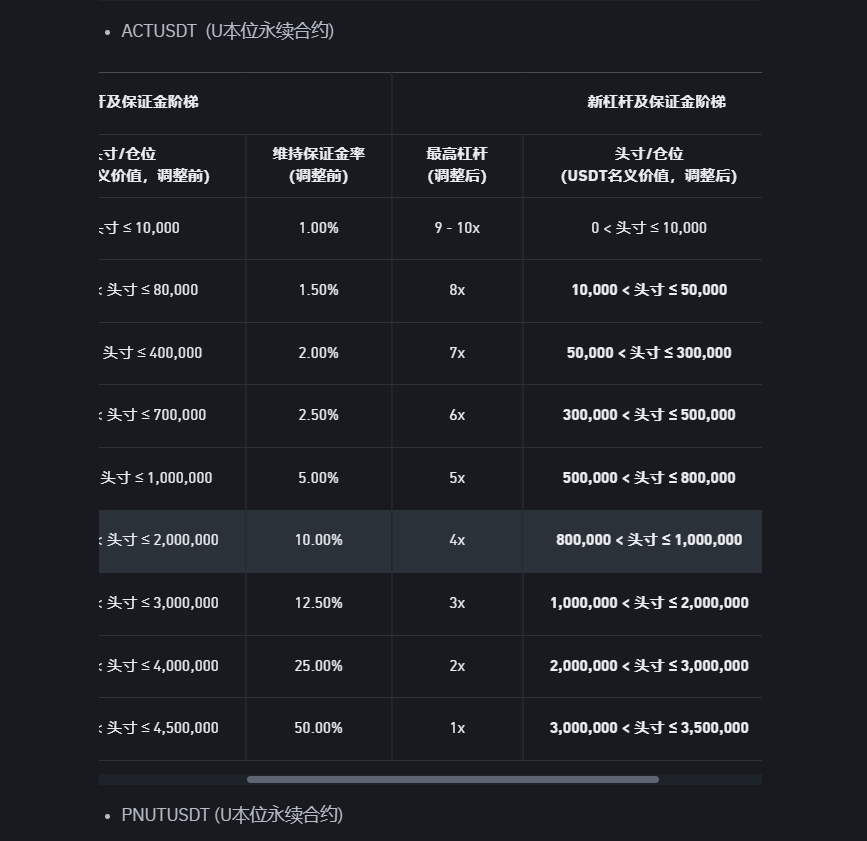
At 18:30 on the same day, ACT fell from $0.1899 to $0.0836 in 36 minutes, a drop of 55%. It triggered heated discussions in the market.
Almost at the same time as ACT, low-market tokens on Binances such as TST, HIPPO, DEXE, and PNUT all experienced flash declines to varying degrees, with the decline generally reaching between 20% and 50%. Market data shows that at 18:30, the starting point of the price of multiple tokens is the starting point of a cliff-like decline, and the impact range is far beyond a single project, showing obvious synchronization.
Specifically, this adjustment is that the maximum position you can hold under the leverage multiple has become smaller. For example: In the past, you could hold a token worth $1 million with a certain leverage, but now the rules have been changed and you may only hold a maximum of $800,000. If the user does not actively close the position, the system will force the over-position at the market price when the rule takes effect. Therefore, a sharp drop in the contract price will occur in a short period of time, which will lead to a stampede.
In this regard, a lot of discussion has sparked on social media. @terryroom2014 pointed out that "the holdings of Binance contracts plummeted at 18:30, and the exchange actively cut positions, resulting in a price collapse"; @yinshanguancha believes that "market makers were forced to close positions due to insufficient margin, and rule adjustments are the fuse." Most users pointed their finger at Binance's rule adjustment, believing that lowering the upper limit of positions triggered forced closing, which in turn triggered panic selling and market stampede effects.
Some users also speculated that this was because ACT's market makers took the initiative to smash the market. @Web3Tinkle pointed out that ACT's holdings on Binance fell by $73 million in just 15 minutes, implying that project parties and market makers instantly shipped to harvest the market.
In response, Binance's co-founder He Yi said during an interaction on X platform that regarding whether the ACT plunge was caused by Binance's amendment to contract rules, He Yi responded that "the team is preparing to reply to details."
About 2 hours later, Binance released a preliminary investigation report on the incident, which stated that the decline in this ACT was mainly caused by the sale of about $1.05 million in spot tokens in a short period of time, causing the price to fall and caused the decline of other tokens. In summary, Binance's response believes that the main reason for this short-term plunge is due to the sell-off of large investors, not the Binance adjustment rules.
Should exchange risk control be "overcorrected" or market makers clear
their positions and protect themselves?
This market crash makes people have to recall the lightning sniping incident that happened not long ago. On March 26, the decentralized exchange Hyperliquid encountered a trader who used liquidity design loopholes to throw huge short orders to the platform, which almost caused the loss of Hyperliquid's vault of over 10 million US dollars.
Perhaps warned by the Hyperliquid incident, Binance tried to prevent and control risks by reducing the risk of low-market value token contract parameters, but he did not expect that it would trigger the market mines in advance.
In addition to Binance's rule adjustments seemingly to be the fuse, market maker Wintermute is also suspected to be the initiator behind it. On the one hand, Binance's adjustment rules are the most affected by the market maker group. @CnmdRain analysis, “This adjustment has a particularly strong impact on market makers (MMs) because they usually rely on high leverage and large positions to maintain market liquidity and earn spread profits.”
Previously, according to Ember speculation, Wintermute may be an ACT market maker (which received 9.482 million ACT tokens from the ACT community wallet in November 2024). After the ACT plummeted, Wintermute took out multiple ACT tokens from the Binance Exchange and sold them on-chain.
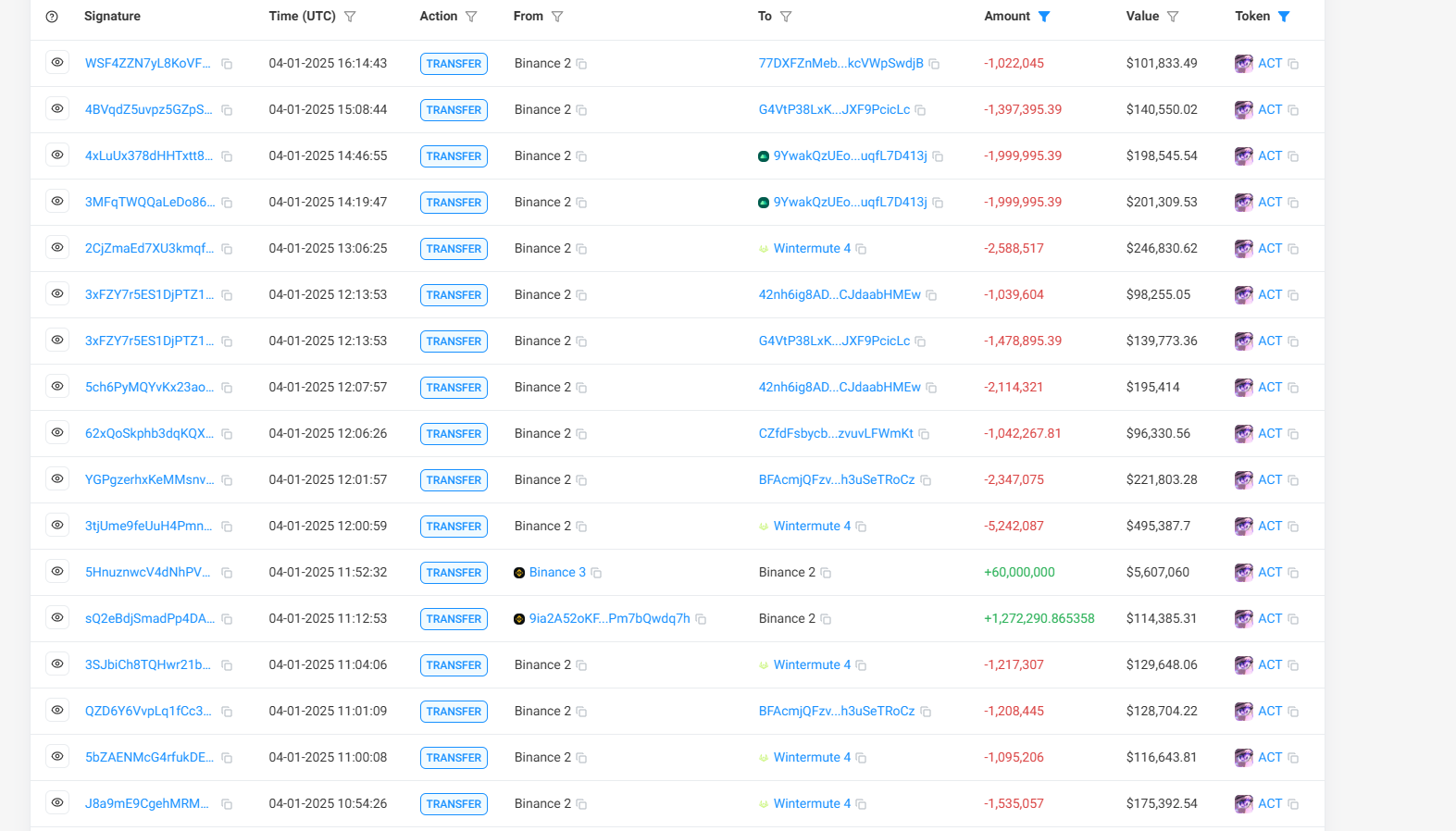
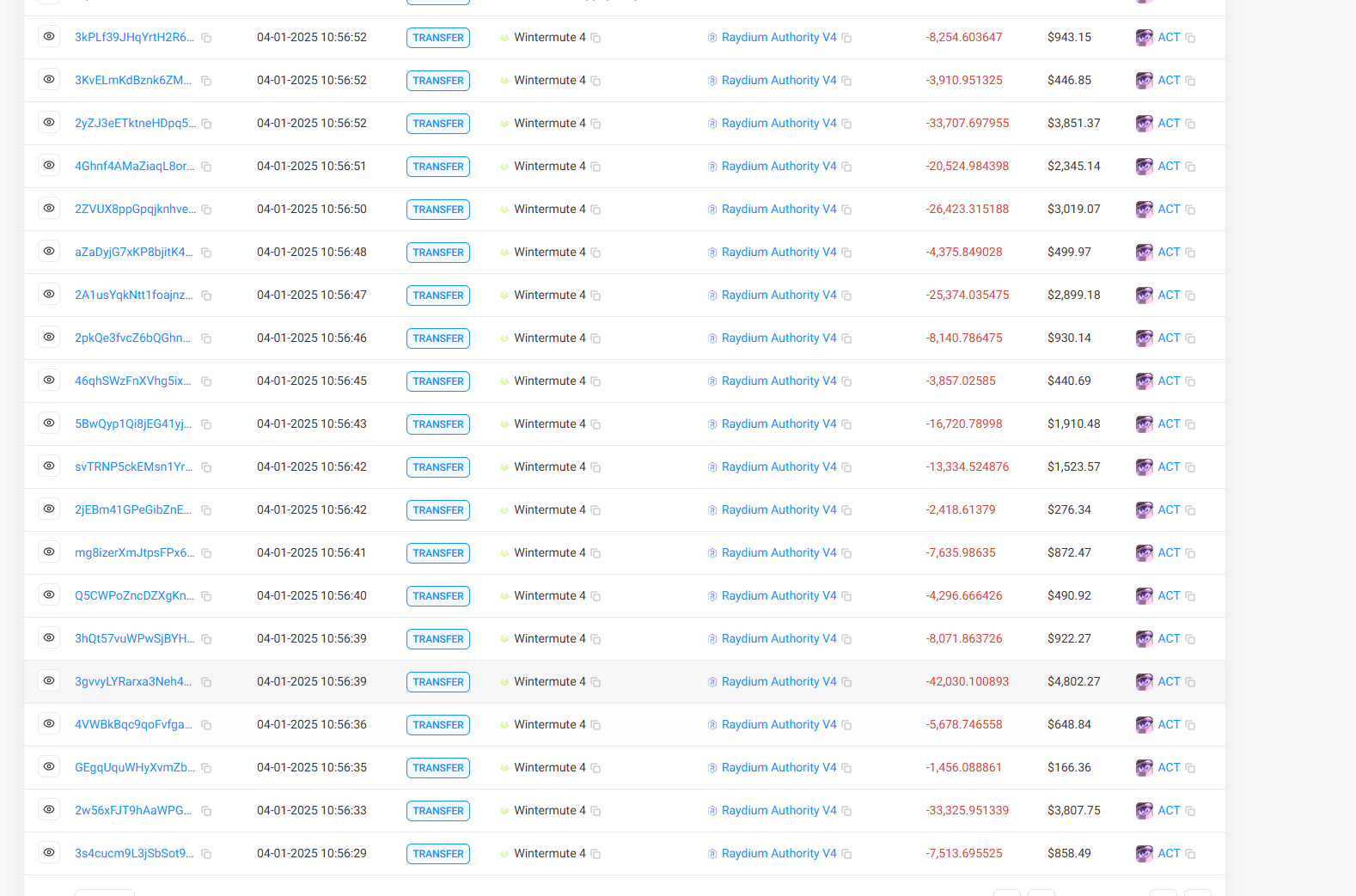
In response, Wintermute founder Evgeny Gaevoy responded that the company did not participate in the leading operations of Meme currency plunge events such as ACT, and only arbitrages the AMM fund pool after the sharp fluctuations in prices. He stressed that Wintermute is not the responsible party for causing this market fluctuation, and is currently paying attention to the subsequent development of the incident.
Faced with this uproar, the ACT project also responded, saying that it has initiated an investigation and is collaborating with relevant parties to handle it, and at the same time, it has jointly formulated a response plan with trusted partners.
Can the evaporation of 75% of the positions be explained by "selling
large investors"?
At this point, the parties involved in this flash incident seemed to have responded immediately and cleared their responsibilities in it. But there are still many questions.
First, Binance's preliminary investigation report does not seem to be convincing. Binance's investigation report said the decline in ACT tokens was related to the sale of a large number of ACT tokens by three VIP users and one non-VIP user. But that doesn't mean that the decline of each token is driven by similar user sell-offs. For ACT tokens, user selling may be the direct reason for ACT's decline, and the reason behind multiple tokens seems to be related to this rule adjustment.
CoinGlass data shows that at 18:30, Binance's ACT contract holdings fell sharply by 75%, and similar situations occurred in the token holdings in several other adjustment announcements, which is difficult to explain as the spot selling of some large investors.
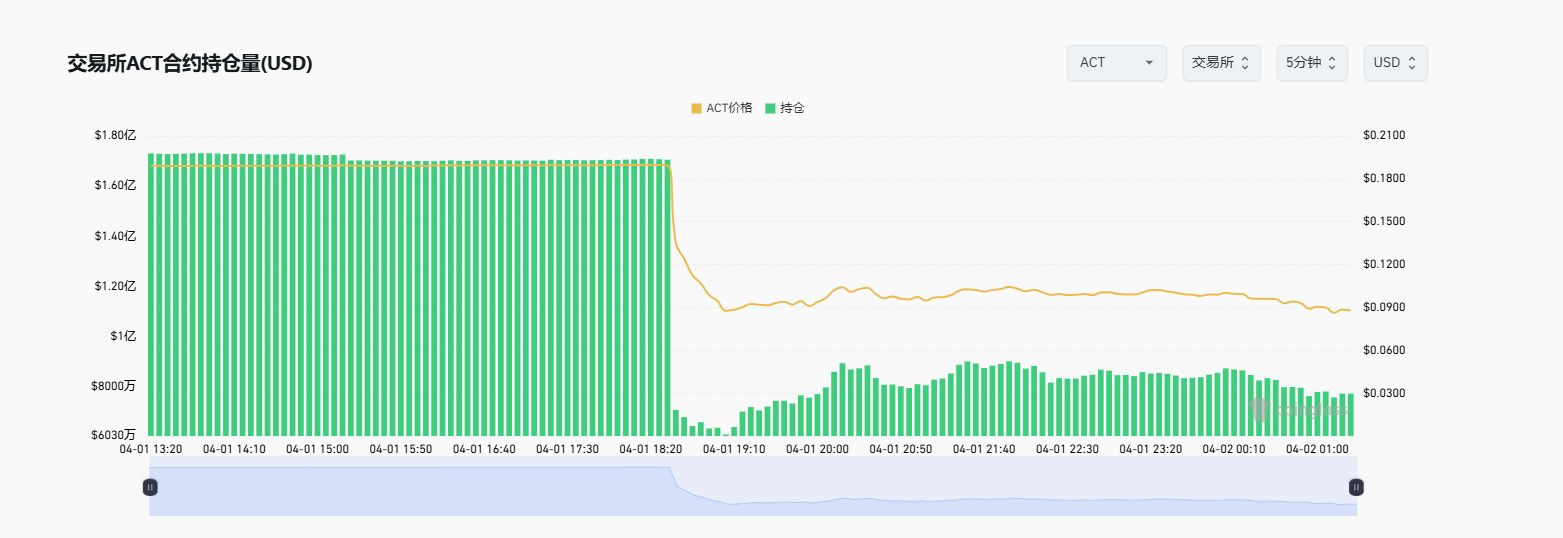

Second, this decline does not seem to be entirely due to the adjustment of the rules. Judging from the trends of several tokens, ACT fell the most, while several other tokens with the same adjustment, such as 1000SATS, also fell, but the amplitude was far less than the exaggeration of ACT. Moreover, another DEXE token that has fallen exaggeratedly is not one of the tokens for this adjustment. However, tokens, which are also listed on the adjustment list, did not fall because of this, but instead emerged from an upward trend.
Third, is Wintermute's departure coincidence or intentional? While ACT plummeted, Wintermute sold multiple MEME coins held, and the market of these tokens also experienced flash crashes to varying degrees. Some social media users also speculated that the main reason for this decline was that Wintermute's algorithm robot had problems due to the influence of rules.
Overall, this short-term flash decline seems to be more comprehensively explained that Binance's adjustment of the holding rules for some token contracts was the fuse, which made some algorithmic robots of market makers such as Wintermute fail to make timely adjustments.
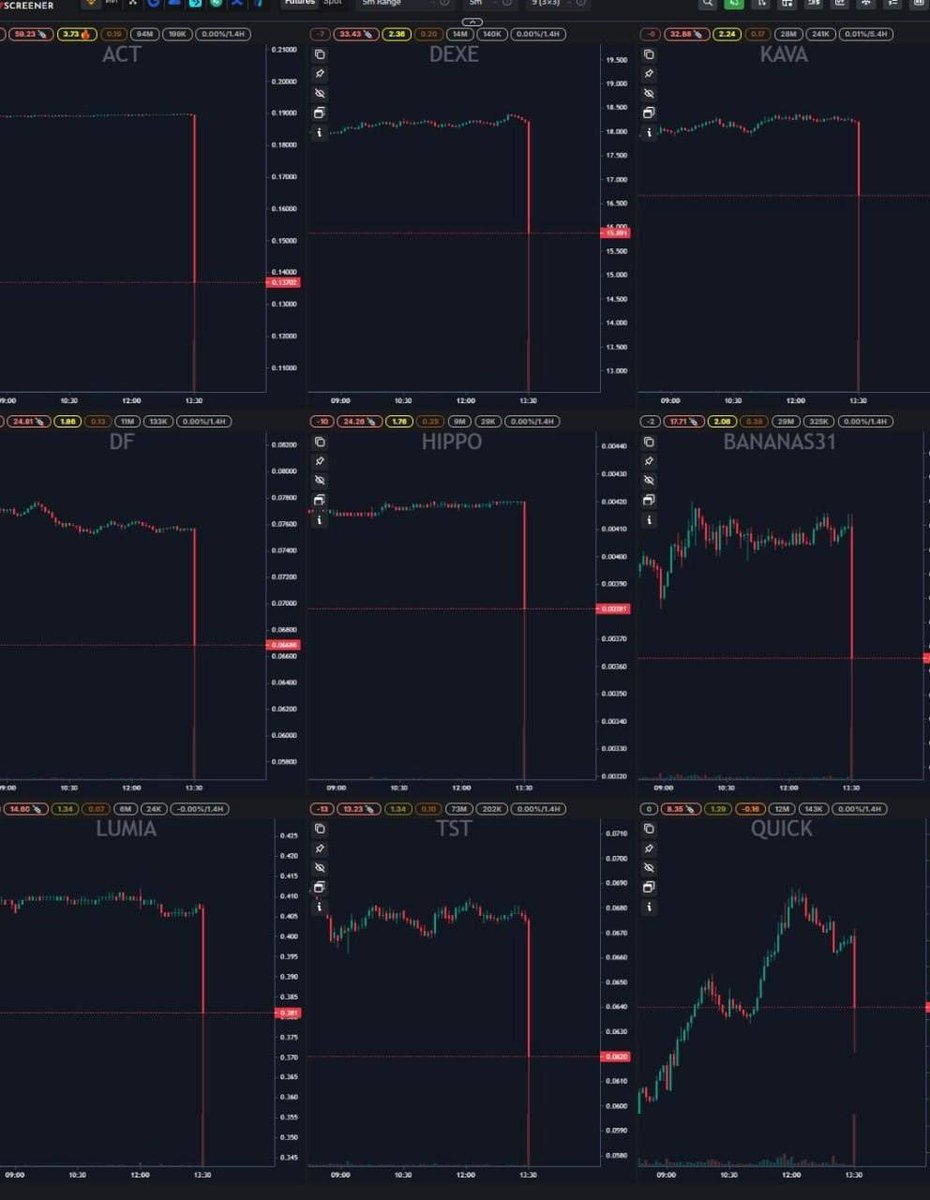
However, no matter why this flash decline occurred, the market/user is always the one who pays.
According to Coinglass data, after the ACT flash crash, the ACT contract was liquidated by US$8.71 million, ranking third in the entire network (only lower than Bitcoin and Ethereum). Not only that, those users holding spot stocks also suffered from half of their assets, and it seems difficult to recover in a short period of time.
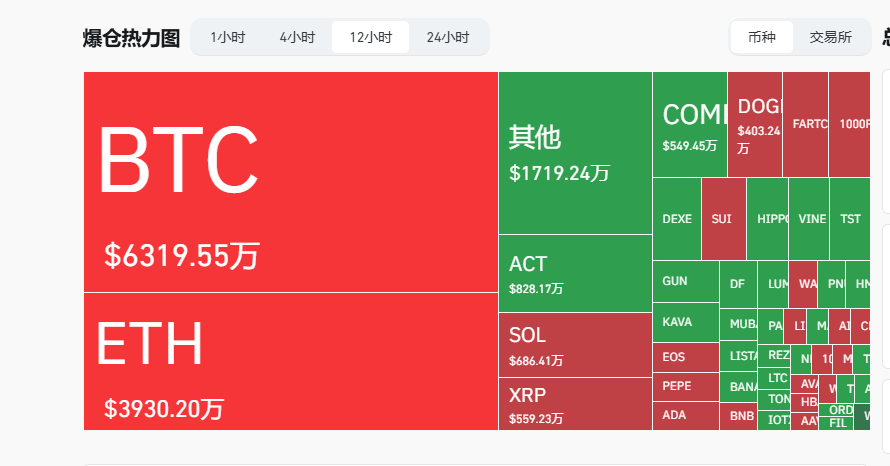
Overall, the deep reasons for this flash crash are as follows. First, after the Hyperliquid incident, the exchange began to pay attention to the risks of giant whales manipulating the market, so it began to make adjustments. This was a good thing, but I never thought that by chance, another trampling was caused. Second, due to the cooling of the MEME market, the related tokens have become vulnerable and sensitive in terms of transaction depth and sentiment. Therefore, once there is an out-of-conventional transaction, it will expose the reality that MEME coins have no value support.
This "Aprils' Day shock" of the crypto market worth tens of millions of dollars ended temporarily with the tacit understanding of exchanges, market makers and project parties. But the warning buried deep in it is far more shocking than the surface. This flash crash may not have a real "murderer", but it tore opens up the most real survival rule of the crypto market: in the precision system built by institutions and giant whales, retail investors often become passive bearers of systemic fluctuations.

